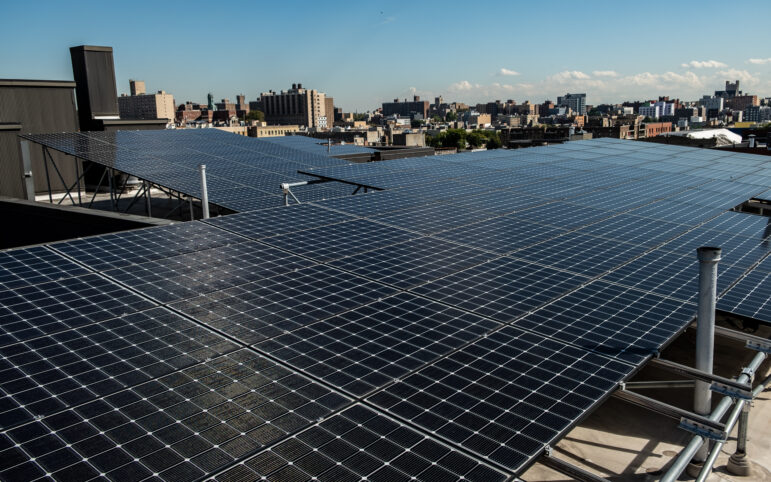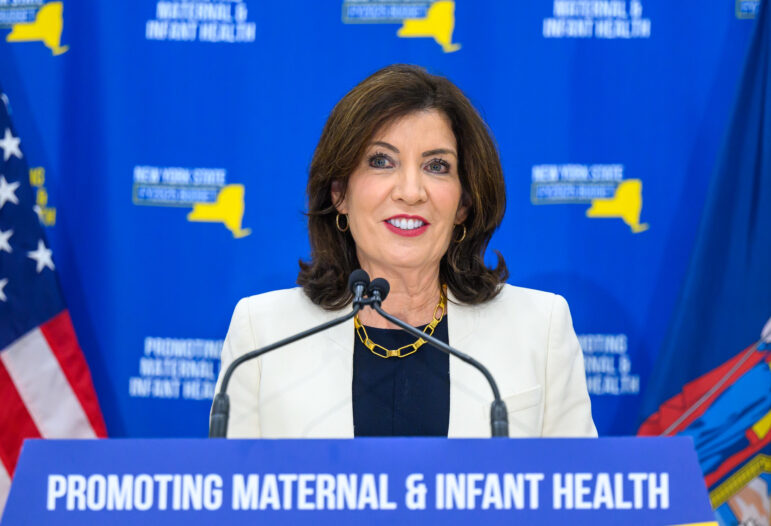“If Mayor Adams is serious about addressing the affordability crisis, he should direct his city agencies to use planning tools to slow land speculation, tax warehoused property and pied-à-terres, and subsidize housing outside of the profit-making system.”

Mayor Adams’ “City of Yes” (CoY) plan to add to New York City’s housing supply by loosening zoning restrictions might better be called “City of Cake.” Adams, is, after all, letting his real-estate industry friends have their cake and eat it too.
While some changes in the CoY proposal would offer developers incentives to build more units in exchange for moderate amounts of actual affordable housing, nothing would mandate and subsidize affordability levels or limit speculation and displacement.
CoY would allow developers to bypass the so-called ULURP public review process for zoning changes and build more densely “as-of-right” under certain circumstances. During the previous administration, many communities, particularly communities of color, used ULURP to oppose proposals that fed gentrification and displacement.
ULURP is imperfect, but silencing community voices while loosening zoning regulations clears the way for developers to increase supply only as they see fit and reap more profits, doing nothing to address the affordability crisis.
CoY’s zoning amendments identify the lack of housing supply as the root cause of our housing crisis. But is lack of supply the main reason the rent is too damn high?
It’s true that the 2023 Housing Vacancy Survey (HVS), shows a vacancy rate between 1 to 1.4 percent of all the New York City apartments considered available. However, the HVS also shows that over 230,000 apartments are vacant but “unavailable for rent or sale.” Why are these units sitting off the market? Many of these units are piéd-a-terres, under renovation, or among the approximately 26,000 rent-regulated units being warehoused by landlords.
On the other hand, New York City has lost over 400,000 low-rent apartments since 2002, due to weakened rent regulations and speculation driving up land prices. Public housing, the largest source of deep affordability in the city, is severely underfunded at the federal, state and city level. Building and apartment conditions remain dire, yet 5,000 units in NYCHA sit vacant while the agency promotes privatization.
As much as actual supply, the problem is also one of effective demand. More than half of New Yorkers are rent burdened, paying more than 30 percent of their income on rent, and in many cases they pay almost double that amount. More than 147,000 New Yorkers were unhoused and living in the shelter system in May, including tens of thousands of children.
Real estate developers won’t build housing priced at levels affordable to unhoused New Yorkers, single parents, the unemployed, and even your average working class family without significant subsidies. It is not profitable enough to do so: if the return on that investment falls below a certain level, the corporate giants behind a lot of the new developments would rather invest their money elsewhere.
The city’s ineffective mandate for “inclusionary housing” allows for a great deal of luxury housing to be developed in exchange for very small numbers of truly affordable units. In fact, of the new “affordable” units built during the de Blasio administration, only 20 percent are considered deeply affordable (that is, affordable for a family of four making $42,360 or less a year.)
The Adams administration implies that enabling the construction of large amounts of market-rate housing with this minimal “inclusionary housing” clause will address the affordable housing crisis by attracting wealthier renters into new market-rate units, freeing up older apartments for the poor, and causing all rents to fall.
Yet in the housing economics literature, evidence for this “trickle-down” effect is contested. By not having a detailed analysis of how much supply, of which kind of housing, would actually result in steeply declining prices, CoY uses freshman-level economics inadequate to understand an extremely complex real world.
In real life, after a massive rezoning in 2005, with 63,000 new residents and 30,000 new housing units built, our own Long Island City became the fastest-growing neighborhood in America. Even with the city’s inclusionary housing rules, the median household income almost doubled, from $52,000 to $97,000, and the average two-bedroom rent skyrocketed from $3,400 a month to $5,300. We clearly increased supply in LIC, yet things only got more expensive, and predictably, the population got significantly whiter.
Deregulating density allows higher profit potential for development throughout the city, driving up the value and cost of the land itself. This increased land value drives up the value of new buildings, which then sell for more, leading to spiraling rents. This also makes it harder for regular people to afford to buy homes, or for municipalities or nonprofits like Community Land Trusts to acquire buildings that can ensure true affordability in perpetuity.
If Mayor Adams is serious about addressing the affordability crisis, he should direct his city agencies to use planning tools to slow land speculation, tax warehoused property and pied-à-terres, and subsidize housing outside of the profit-making system.
Until the city views housing as a human right instead of as a commodity, the city will only keep sweetening the deal for developers. CoY only says to the rest of the city, “Let them eat cake.”
The result will be developers and landlords left unaccountable to communities, and already precariously-housed communities pushed around, pushed to the brink, or pushed out of the city.
Thomas Angotti is a professor emeritus of urban policy and planning at CUNY. Jenny Dubnau and Memo Salazar are board co-chairs at the Western Queens Community Land Trust.








One thought on “Opinion: Mayor’s City of Yes is Really a ‘City of Cake’”
Thank you for this article. I have been astonished to hear supposedly progressive politicians like Mark Levine pushing for this nonsense. It’s a scam.
They promised us affordable housing with Hudson Yards, and then it disappeared. Poof.